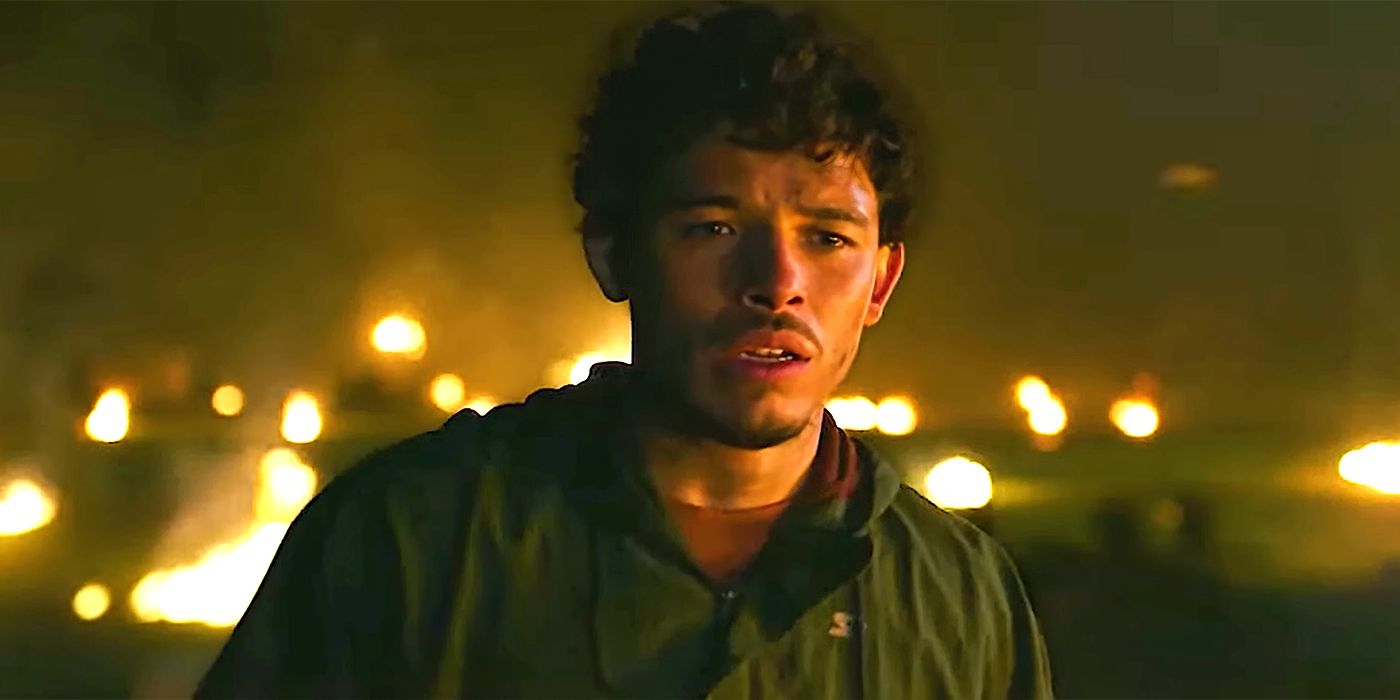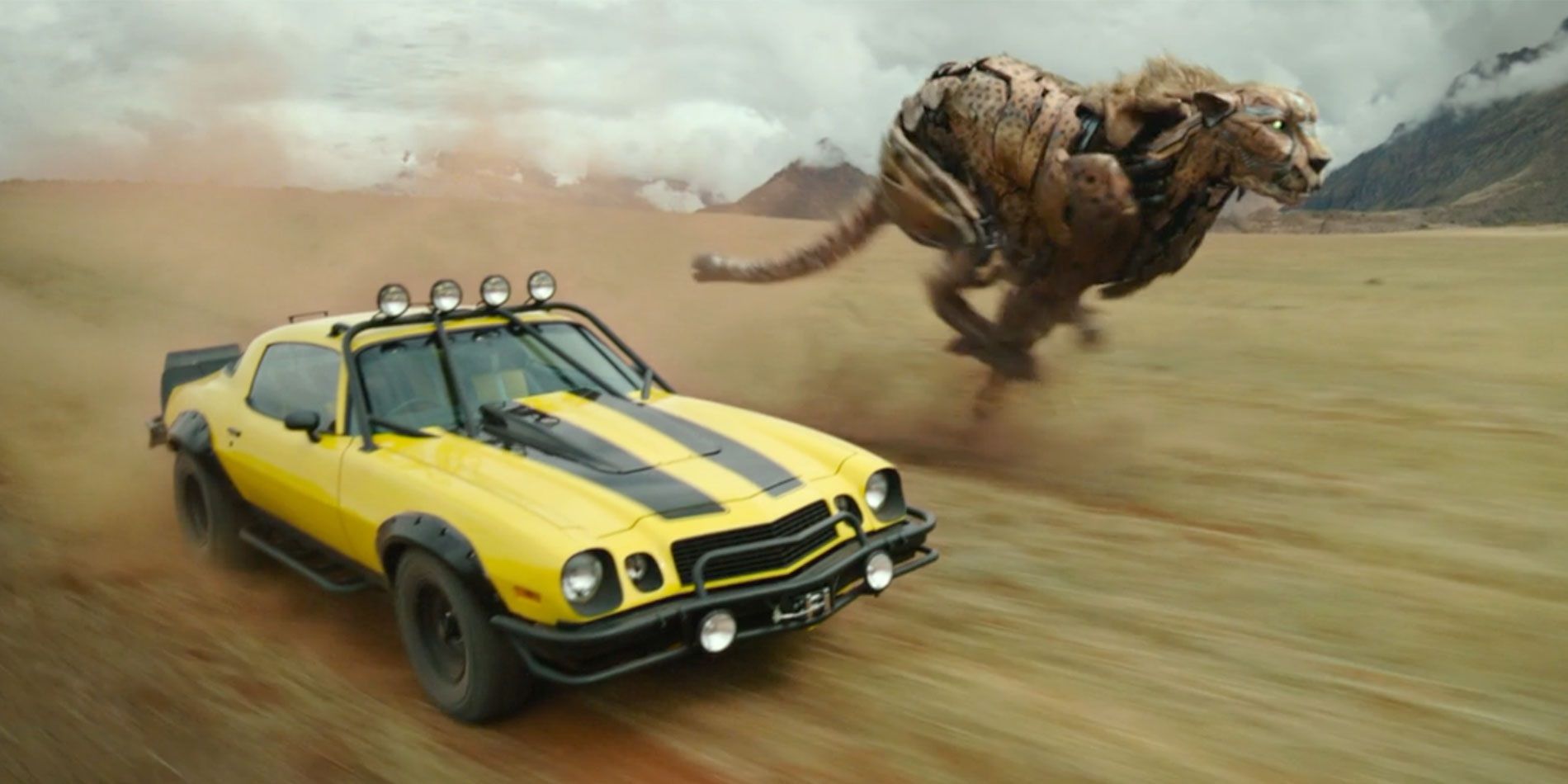Transformers: Rise of the Beasts is finally here, ready to captivate audiences around the world. This latest installment in the Transformers franchise has been praised for its return to form after the 2018 reboot Bumblebee. Fans of the beloved 1990s animated series Beast Wars: Transformers are especially thrilled, as the film brings iconic characters like Optimus Primal, Cheetor, Rhinox, and Airazor into the live-action realm for the very first time. But that’s not all – Transformers: Rise of the Beasts also introduces new talent both in front of and behind the camera, with Anthony Ramos and Dominique Fishback taking the lead roles, and Steven Caple Jr. directing.
While Transformers: Rise of the Beasts introduces new faces to the franchise, it’s important to recognize the contributions of those who have been involved from the beginning. Lorenzo di Bonaventura, the producer of every Transformers movie, has played a crucial role in shaping the series. Di Bonaventura is no stranger to blockbuster films, having also worked on iconic movies like The Matrix and the Harry Potter franchise. In Transformers: Rise of the Beasts, di Bonaventura was instrumental in bringing the Maximals to life and orchestrating the film’s exciting G.I. Joe crossover ending.
In an exclusive interview with FilmmakerFocus, Lorenzo di Bonaventura shares his insights on Beast Wars: Transformers, the use of practical effects, and more. It’s worth noting that this interview was conducted during the 2023 WGA and SAG-AFTRA strikes, and the film discussed here would not have been possible without the hard work and talent of the writers and actors in both unions.
Lorenzo di Bonaventura on Transformers: Rise of the Beasts
FilmmakerFocus: I know you spoke with FilmmakerFocus before [Transformers: Rise of the Beasts] came out. Now that it’s out, I’ve seen a lot of posts from very happy fans. How do you feel?
Lorenzo di Bonaventura: I feel really good about that, honestly. You make these kinds of movies for the fans. It’s not the thing [where] you’re saying, “Well, I’m trying to make a special art movie here.” We’re trying to make people have a great time with something that they’re very admittedly passionate about. It’s one of the things I’ve learned over time in working with it: just how fundamentally important it is, that kind of fanship—to the franchise, for sure, but actually how strongly individuals hold it and what it means. The best reaction we could have is when we hear they’re content or they’re super happy. That’s what we do it for.
I grew up on Beast Wars–it was my favorite thing as a kid–so I was freaking out. There are a lot of new factions, like the Maximals, in this, there are new human characters, [and] you’re making it feel personal and emotional. What was the biggest thing that you had to sacrifice in the making [of the film] to balance all that?
Lorenzo di Bonaventura: I’m not sure we had to sacrifice anything. It was very hard–actually, I’ll take it back. The thing you have to sacrifice is the secondary characters. Look, we would love to do more with Cheetor or Rhinox, but you just don’t have the time for it–just as we’d love to give Arcee more time. It’s that kind of thing. You kind of have to choose the screen time for the characters, and so in that respect, you are sacrificing something.
I saw an interview with your director, Steven Caple Jr., where he was asked about Rattrap, and he was talking about how he was sad that character couldn’t make the movie. He said there were a few others that hurt him to leave out.
Lorenzo di Bonaventura: Rattrap was the one I always heard from him. My sadness was not that we didn’t have a specific character, because there’s so many. I’m used, unfortunately, [to] having to choose; that was Steven’s first time. For me, I’m used to that. But it’s the part, like, what did you love [about] Cheetor? You can’t do it all, and so that’s the part where it hurts as you’re doing a development.
As someone who has been involved with all of these films now, how much do you think, like, “Okay, we’re going to save this for a future movie.” Does that come up, and do you kind of push things aside?
Lorenzo di Bonaventura: It’s interesting. Yes, [but] the answer is actually sort of bifurcated. Really good ideas do get sacrificed along the way, and sometimes they appear in the next movie, or the movie after that; that definitely happens. Usually what happens, though, is we’re trying to stuff everything in to make it the greatest experience, and so it’s more about, “What will the movie hold?” in a way. It goes back to what I was saying about the characters. You can invest in five or six characters; you start to try to invest in more than that, it becomes really hard.
[In] the process of making the film, ideas do get pushed aside in part because there’s just not enough time for them all. One of the things that’s always interesting on the DVDs are the scenes that have been cut out. They’re not always cut out because they weren’t that great; they’re often cut out because the movie had too much at that moment, or it slowed the movie [down] too much at that moment. That’s also an interesting part of it: you put it in the movie, and then you look at it and you’re like, “Oh, I love that scene, but we can’t do that. It’s taking your eye away from the ball too much,” or “It’s slowing the movie down too much.”
I also saw something where your director was talking about an instance where an on-set explosion caused Anthony Ramos’ jacket to catch fire a little bit. It got me wondering, where’s the line in terms of where you want to be practical with your effects and where you want to be full CGI? Obviously, [with] the full Transformers sequences, it’s tough.
Lorenzo di Bonaventura: I know one of the successes of Transformers is that even though we use a lot of CGI, it doesn’t feel like a CGI movie in many ways because we shoot so much practical. I have a personal opinion about it, which is [that] I think these companies that make these movies… they feel fake to me a lot of times because it’s visual effects on top of visual effects. If we’re doing visual effects, we’ve always done part of it practically.
Usually, the demands of balancing those two [are] not about safety. If safety comes into play, it’s because it’s a live-action action beat–a car chase, whatever that thing is. Then, it’s really rigorous; the safety that goes on around them. Like everything, something can go wrong, but if you’ve planned for it, it’s [usually] just a brief second, and everything’s fine.
We had a scene that got cut out, actually, where Optimus Prime rammed our bad guy when he was in truck form, and you go through a wall, so it was a big stunt. It just turned out we didn’t need it, so it doesn’t end up in the movie, but at that day, you’re sitting there and that’s almost your whole day–just making sure that one thing is safe before you do it.
It’s a big deal that there’s the G.I. Joe/Transformers moment at the end of this film.? How far into the future are you thinking when you plan a moment like this? Or is [that] next movie’s problem, in a way?
Lorenzo di Bonaventura: It is, in a way, next movie’s problem, because it’s really hard to make one movie well. This idea that you can plan that so well, I don’t really believe it. When I hear other filmmakers go, “Oh, yeah, we planned it all out,”—give me a break. If you have a series of books like Lord of the Rings or Harry Potter, that’s a different situation; you’re following something that’s already been created.
We like to watch the film with the audience and then get their reaction. A great example of this is [that] if we had tried to plan ahead, we would not have planned Mirage to be a character in the next movie, necessarily. After seeing the movie, Mirage is almost a definite, right? That’s the kind of thing that you can’t guess ahead. At the end of the movie in the reveal of, like, “Okay, we’re going to add a new element to this,” what if it was just silent in the theater? “Oops!” You know what I mean? But, thankfully, it was a big cheer, so now we can go with confidence in that direction.










